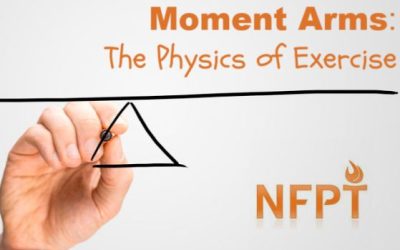Most fitness enthusiasts who have had their sights set high on muscle growth have certainly heard of creatine if they aren't already taking it. If you've taken it and tolerated it well, it's probably still a part of your pre-workout ritual. And with good reason:...
Michele Rogers
The Intrinsic Muscles of the Back: Getting the Musculature of the Spine Straight
The intrinsic muscles of the back are a bit complex to say the least. Not only are there several muscles that literally overlap, but their names also overlap as well, making matters more confusing. Let's break everything down in a way that makes sense and that we, as...
Understanding Transversospinales: The Deep Intrinsic Muscles of the Back
The deep intrinsic muscles are located beneath the erector spinae, and are known collectively as the transversospinales. They are a group of short muscles, associated with the transverse and spinous processes of the vertebral column that primarily support the segments of the spine and serve as proprioceptors. Personal trainers who want to go deeper into their anatomy knowledge and application should read on.
Understanding Erector Spinae: Nail the Intermediate Intrinsic Muscles of the Back
Understanding the attachments and function of the erector spinae group can help shed light on some typical compensation patterns and postural dysfunction like hyperkyphosis or excessive lordosis often seen in our clients. With low back pain afflicting an estimated 50%...
Understanding the Spinotransversales: The Superficial Intrinsic Muscles of the Back
The intrinsic muscles of the back control the vertabral column, i.e., the spine, and are situated deep below the extrinsic muscles which are responsible for movements of the thoracic cage and shoulder joints. The spinotransversales group are the first (top) layer of...
Can Arnica Assist With Muscle Soreness and Injury?
Everyone experiences at least minor aches, pains and bruising, if not outright injury or trauma at some point in their lifetime, making expeditious and complete healing a priority for many people, including our fitness clients. While there are the proper steps to take...
Kim Becknell Williams–NFPT Personal Trainer Spotlight
Meet Kim Becknell Williams, a certified NFPT trainer and blogger who has written for our own blog in the past and will be a regular contributor going forward! She's proof that becoming a career fitness professional can happen at any age and successfully so! We're...
Interpreting Signs of Overhead Squat Assessment: Upper Body Dysfunction
Upper body dysfunction (UBD) may appear upon observation as simple shoulder dysfunction, as has been suggested with models such Upper Crossed Syndrome. But the glenohumeral (GH) joint does not function independently, nor is upper body function and movement limited to...
Ice or Heat for Pain?
As personal trainers, we have well-acquainted ourselves with the PRICE protocol; pressure and ice help to reduce the swelling associated with acute injuries. And when it comes to muscle tension, moist heat applications are recommended. However, as of late, there has...
5 Calorie Hacks You’ll Never Notice Making
Who doesn't love a good hack, especially when it can reduce the calorie tally of the fat loss client's day? There are often hidden culprits in a seemingly balanced diet that can be eliminated without any loss of food satisfaction, and it's simply a matter of finding...
Interpreting Signs of Overhead Squat Assessment: Lumbo Pelvic Hip Complex Dysfunction
Interpreting the noted signs of an Overhead Squat Assessment (OHSA) can help a persoal trainer identify muscle imbalances, such as which muscles are long and weak, or short and tight, or maybe even long and overactive. Interpreting the signs can help identify...
Intuitive Eating: The Anti-Diet
Perhaps the answer to our personal training clients' difficult weight loss rests in not dieting at all and honing the skill of intuitive eating instead. Novel concept? No, not really. But you wouldn't know it today with so many diet options overwhelming the...
To Weight Belt or NOT to Belt?
Are weight belts necessary or might they even be harmful? How should personal trainers advise their heavy lifting clients? As a former queen of "ab day", having taught 30-minute abs-only classes and putting out a 30-minute video called "Ab Shredder", I may have...
How to Perform a Goblet Squat
A Goblet Squat is a variation of a conventional squat that can be useful for most personal training clients, but especially those with certain limitations. While you can certainly skate by handing your client a pair of 20 lb dumbbells and telling her to perform three...
Moment Arms in Exercise: A Brief Introduction to the Physics of Movement
For those of you who read the word "physics" and still opened this blog, I applaud you for being willing to challenge the breadth of your knowledge to learn a little more about how resistance forces impact the exercise selection for your clients. And if you're not...
How to Perform a Sumo Squat with Lateral Hip Rotation
When it comes to lower body development, the squat reigns supreme for hitting all the large muscles at once, and adding squat variations to your program will not only keep things interesting but will help to hit those big muscles from different angles and with varying...
The Pelvic Girdle: How Personal Trainers Gain a Deeper Understanding of Anatomy
It's helpful for certified personal trainers to understand the bone structure and joints of the pelvic girdle given how much movement takes place through the hips, and also, how many issues tend to surface with clients' form, function and even pain issues. Naming the...
Gunnar Walcavich: NFPT Personal Trainer Spotlight
Meet Gunnar Walcavich: brimming with grit, determination, enthusiasm, and confidence. And all this he hopes to cultivate in his fitness clients. Gunnar is a professional boxer with high aspirations while maintaining his passion for sharing fitness with others. Here's...



